KUNSTART 12 – BOLZANO – FROM THE PASSION, EXPRESSION AND ABSTRACT TO THE CONTEMPORARY ART IN SOUTH KOREA
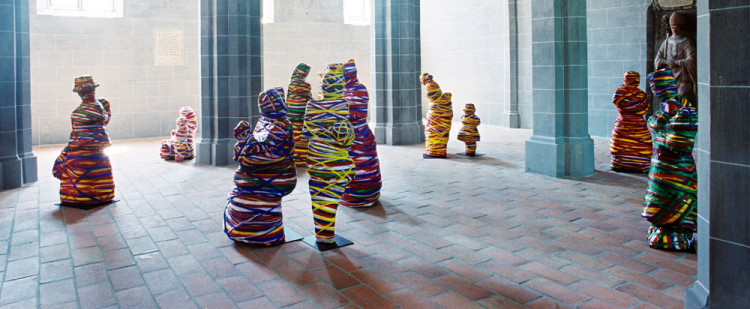
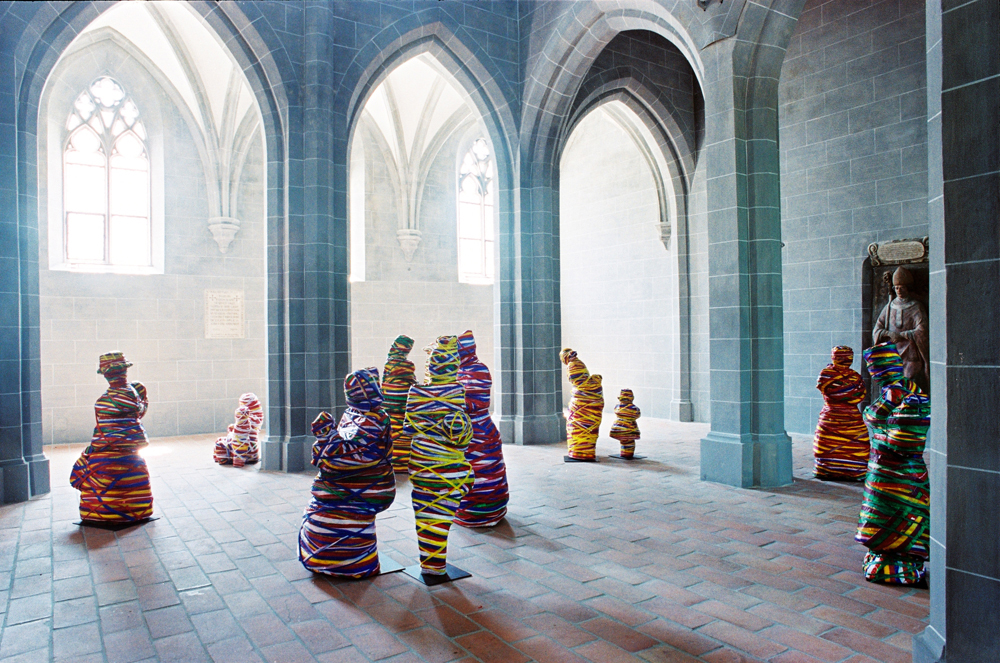
Text by Martino Kim published on Focus Korea
‘From the Passion, Expression and Abstract to the Contemporary Art in South Korea’
It has been more than 50 years since the real flame of contemporary art had begun to glow in Korea. However we still have confusion in writing the art history of Korea.
Why? Because the 21st century began its course without the proper verification of ’Informel’ which is considered to be the root of contemporary art in Korea.
It was not clear whether ‘Informel’ painting which was an important milestone in art history of Korea as a new trend in 1950s, was a consequence of the atmosphere of Korean Civil War (1950-1953) or a natural birth, whether it came up with ‘combat boots’ of United Nations Security Force or was due to art critics who actively introduced international art or to American art introduced through “Time”, “Life” or “Art News” etc,.. magazines familiar with American Abstract Expressionism at that time.
The art of the late 1950s in Korea, represented by the passion and the expression, really is the point of contact and start of blooming of Western and Korean abstract art after the war.
The lost period in the early 20th century dominated by Japanese colonization (1910-1945) over Korea made our spirit of modern art drift. However, in 1915, after Hui-Dong Koh (the first Korean artist of western painting) returned home after studying Western painting the ’Impressionism’ was born. Since then, Korean art developed through conflicts among Traditional, Modern and Contemporary Arts.
The main trend in art of the 1970s in Korea was the submergence in the conceptual art of modernism and minimal art, and the artists group of Ufan Lee, Seo Bo Park, Se Ok Seo, Chang Yeol Kim and Jong Hyun Ha, Hyung Keun Yoon headed a new contemporary art in Korea.
From late 1970s through early 1980s new Korean hyperrealism artists were born under the influence of the American hyper-realism and were represented by Man Young Han, Yeong-Hun Koh, Seok-Ju Lee and Seok-Cheol Ji.
In the 1980s, worldwide there was a predominance of NEO Expressionism arts i.e. NEO Expressionism in Germany, Trans Avant Garde in Italy, NEO Expressionism in New York & in France. In Korea, Hak-Cheol Shin, Yoon Oh, Ok-Sang Lim who were called folk artists joined realism and represented the NEO Expressionism in Korea at that time.
In this period the black-and-white ink painting represented by Soo-Nam Song got more popular than the colored painting and contemporary art, but lost its identity and roots now overwhelmed by the Western Art and Pop Art.
What about the contemporary art in Korea in the 21st century?
First of all we remember a world-famous video art creator, Nam-June Paik.
Paik’s art in fact can be called the flower of the visual revolution and the triumph of a new art format. Paik indeed became an inspiring example of Korean art in the world.
His work has been started in Germany and spread all over the world, since in a society where technical revolutions were taking place in all sectors, it was a natural consequence that exhibitions were obsessed with the digital art and technology.
A variety of software for more visual and exciting art images developed and spread in art and art spaces of this century. Exhibition spaces through mass media such as e-fairs are brilliantly occupied by the revolution of digital art.
Yeon-Du Chung through mass media, Yong-Baek Lee and Jung-Hwa Choi with Installation Art, Do-Ho Suh revealing a message of a clash between civilizations and era, Su-Ja Kim working with cloths and bags, Byung-Woo Bae and A-Ta Kim by means of photography are a group of artists who show the position of Korean Contemporary Art in the world.
Now, I believe the group of more than 50 excellent Korean artists (including Jeong-Min Suh for the solo show) participating in the kunstart 12 Biennial Art Fair in Bolzano will introduce a high level of Korean arts to Europe and bring honour to our country by making a great success as well.
Martino Kim
(adjunct professor at Hongik University. KARTIST PROJECT director, Publisher of ‘Art & Collector‘ art magazine, art critic)
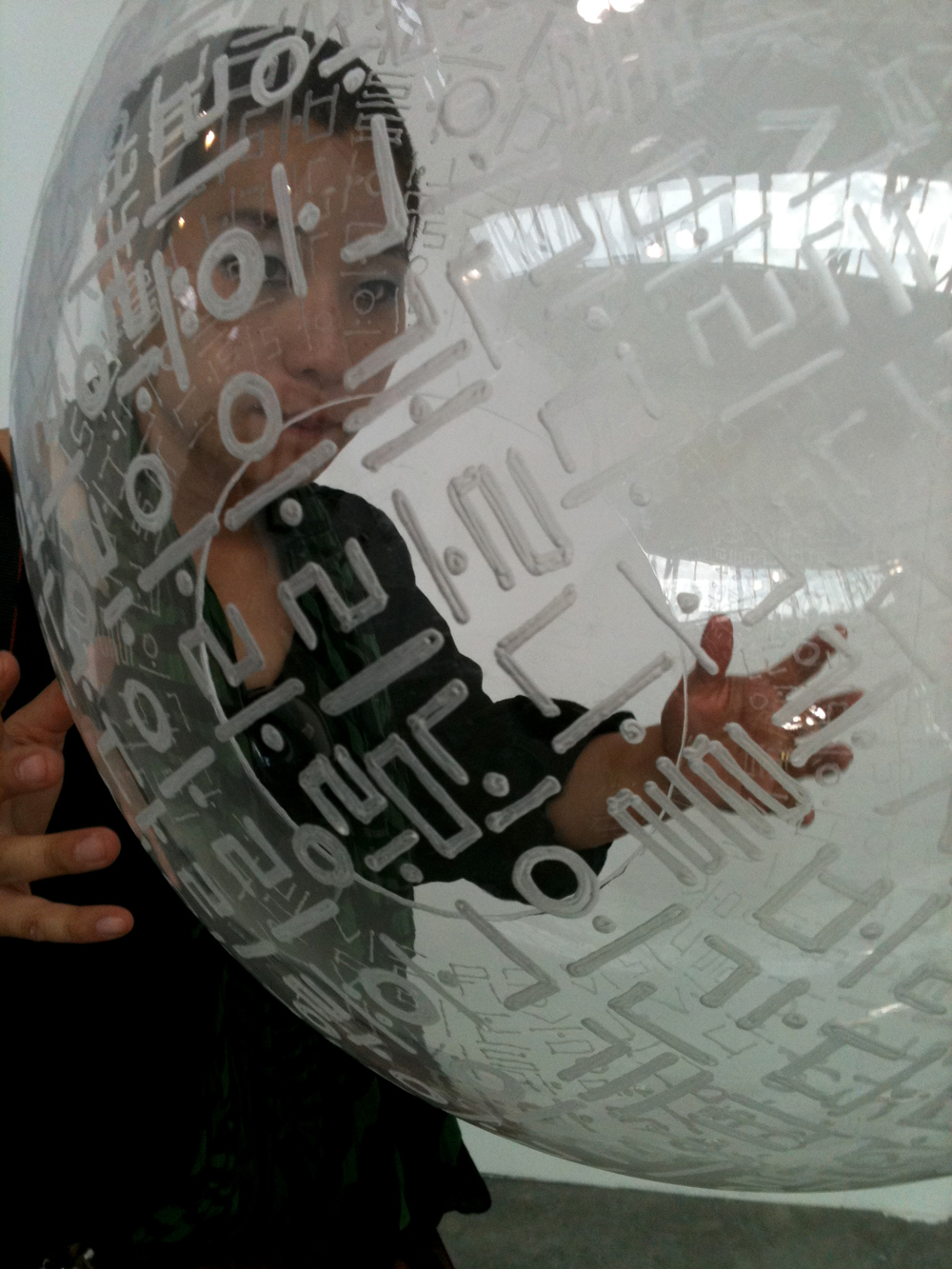
Testo di Martino Kim pubblicato in Focus Korea
Da passione, espressione e arte astratta fino all’arte contemporanea in Corea del Sud
È da oltre 50 anni che la fiamma dell’arte contemporanea si è accesa in Corea del Sud.
Ciononostante, in Corea abbiamo ancora confusione a scrivere la storia dell’arte. Perché? Perchè il 21esimo secolo si era aperto senza un’adeguata verifica dell’Informale, che era considerato la radice dell’arte contemporanea in Corea.
Poiché non era chiaro se l’avvento della pittura “informale”, fenomeno importante nella storia dell’arte della Corea come nuova tendenza artistica degli anni ’50, fosse dovuto al clima della Guerra Civile Coreana (1950-1953), se fosse un fenomeno nato spontaneamente, o se invece si sviluppò con l’arrivo delle Forze Nazionali degli Stati Uniti, o grazie a critici d’arte che contribuirono attivamente all’introduzione dell’arte internazionale, o ancora all’arte americana, introdotta attraverso “Time”, “Life”, o “Art News” e altre riviste vicine al fenomeno dell’astrattismo americano dell’epoca.
L’arte degli anni ‘50 in Corea del Sud, rappresentata dalla passione e dall’espressione, è veramente il punto di contatto e l’inizio della fioritura dell’arte astratta occidentale e coreana nel dopoguerra.
All’inizio del 20esimo secolo il periodo della colonizzazione giapponese in Corea (1910-1945) può considerarsi un momento di deriva dell’arte moderna. Ciononostante, nel 1915, dopo che Hui-Dong Koh (il primo artista coreano di pittura occidentale) ritornò a casa dopo gli studi all’estero, la pittura occidentale prese piede e nacque l’”Impressionismo”.
Da allora, l’arte coreana si sviluppò attraverso i contrasti tra l’arte tradizionale, l’arte moderna e quella contemporanea. La tendenza dominante dell’arte negli anni ‘70 in Corea del Sud è stata la sommersione nell’arte concettuale del modernismo e del minimalismo, e il gruppo di artisti formato da Ufan Lee, Seo Bo Park, Se Ok Seo, Chang-Yeol Kim, Jong Hyun Ha e Hyung Keun Yoon ha aperto una nuova fase dell’arte contemporanea in Corea.
Dalla fine degli anni ’70 e per tutti gli anni ’80, sotto l’influenza dell’iperrealismo americano, si è sviluppata la corrente dell’iperrealismo coreano rappresentata dagli artisti Man Young Han, Yeong-Hun Koh, Seok-Ju Lee e Seok-Cheol Ji.
Negli anni Ottanta, come si è visto in tutto il mondo, il Neo Espressionismo ha conosciuto una fase predominante, con la diffusione del Neo Espressionismo in Germania, della Transavanguardia in Italia, del Neo Espressionismo a New York e in Francia. In Corea, in quell’epoca, Hak- Cheol Shin, Yoon Oh e Ok-Sang Lim che erano chiamati artisti popolari e aderirono al realismo, rappresentavano il Neo Espressionismo coreano.
I dipinti a inchiostro in bianco e nero realizzati da Soo- Nam Song a quel tempo erano più popolari dei dipinti a colori e dell’arte contemporanea, ma hanno perso la loro identità e le radici, oggi inondate dalla Western art e dalla Pop Art.
Detto ciò, che cosa dire a proposito dell’arte contemporanea in Corea nel 21esimo secolo?
Viene alla mente un artista di video art famoso in tutto il mondo, Nam-June Paik.
Nel suo lavoro cominciato in Germania e poi diffusosi in tutto il mondo si riscontra la tendenza naturale di una società nella quale le rivoluzioni tecniche stavano investendo tutti i settori ed in cui gli eventi artistici erano condizionati dall’ossessione per il digitale e la tecnologia del 21esimo secolo.
Una varietà di software per ottenere immagini d’arte più visive ed emozionanti invasero gli spazi d’arte. Le sale espositive attraverso i mass media, come nelle fiere online, vengono brillantemente occupate da una rivoluzionaria forma di arte digitale.
Yeon-Du Chung attraverso i mezzi di comunicazione, Yong-Baek Lee e Jung-Hwa Choi con le installazioni, Do- Ho Suh rivelando un messaggio di scontro tra civiltà ed epoche storiche, Su-Ja Kim con l’uso di stoffe tese o ripiegate a borsa, Byung-woo Bae e A-Ta Kim attraverso la fotografia, sono attualmente gli artisti che raccontano la situazione dell’arte contemporanea coreana nel mondo.
Ora, credo che il gruppo di più di 50 eccellenti artisti coreani (incluso Jeong-Min Suh per il Solo Show) che parteciperanno a kunStart 12 introdurranno un alto livello di arte coreana in Europa e porteranno cosi onore al loro paese.
Martino Kim
(professore associato, Hongik University, direttore del K-ARTIST PROJECT, editore del Collector’s art Magazine, critico d’arte)
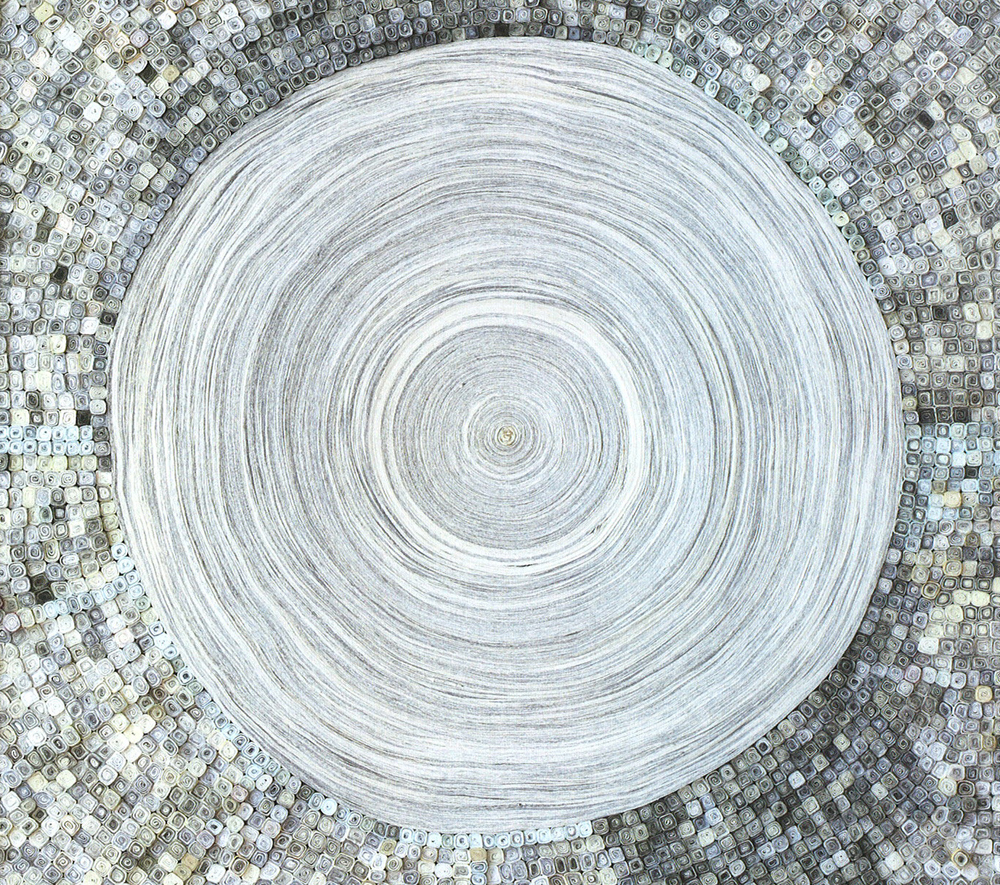
Von Leidenschaft über Expressionismus und Abstraktion zur Gegenwartskunst in Südkorea
Vor etwa 50 Jahren flammte der erste Funke von Gegenwartskunst in Korea auf, jedoch ist es immer noch
schwierig die koreanische Kunstgeschichte zu schreiben.
Wieso?
Diese Unklarheiten beruhen auf der fehlenden Erfassung des Informel das als Basis der koreanischen Gegenwartkunst angesehen wird.
Bis heute ist noch nicht klar, ob die informelle Kunst, die als neuer Trend der 50er Jahre von großer Wichtigkeit für die koreanische Kunstgeschichte ist, durch die Geschehnisse des Bürgerkrieges (1950 – 1953), aus einer natürlichen Entwicklung oder wirklich durch die „Kampfstiefel“ der UN Friedenstruppen in Korea Fuß fasste. Ob sie über Kunstkritiker die aktiv internationale Kunst forcierten, oder durch amerikanische Einflüsse, über die Magazine „Time“, „Life“ und „Art News“ und deren Artikel über den amerikanischen Expressionismus, aufkam.
Fakt ist: die von Passion und Expression geprägte Koreanische Kunst der späten 50erJahre erlebt ihre erste
Blütezeit und den ersten Austausch mit den westlichen Kunsttraditionen nach dem Krieg. Das frühe 20 Jh., als Japan von 1920 bis 1945 eine unerbittliche Kolonialpolitik in Korea vorantrieb, gilt hingegen als eine für die Kunst verlorene Phase, in der jeder Geist, jedes Gefühl von moderner Kunst abzudriften drohte.
Nichtsdestotrotz wurde mit Hui-Dong Koh (der erste koreanische Künstler der unter dem Einfluss der westlichen Malerei stand), der 1915 nach seinen Studien im Westen nach Hause zurück kehrte, der koreanische Impressionismus geboren. Seit damals war die koreanische Kunst von einem ständigen Konflikt zwischen Tradition, moderner und zeitgenössischer Kunst geprägt. Die 70er Jahre sind durch den Übergang von modernistischen und minimalistischen Tendenzen zur Konzeptkunst geprägt und eine Künstlergruppe um Ufan Lee, Seo Bo Park, Se Ok Seo, Chang Yeol Kim, Jong Hyun Ha und Hyung Keun Yoon sind die Begründer einer neuen Gegenwartskunst in Korea.
Von den späten 70er bis in die frühen 80er kam unter dem Einfluss des amerikanischen „Hyper-Realismus“ auch in Korea diese Kunstrichtung auf. Die Künstler Man Young Han und Yeoung-Hun Koh, Seok-Ju Lee & Seok-Cheol Ji waren die wesentlichen Vertreter dieser Zeit.
Lenkt man den Blick einmal rund um den Globus, so waren die 80er Jahre von der Vorherrschaft des Neo-Expressionismus geprägt. Neo-Expressionismus in Deutschland,
Transavantgarde in Italien, NEO Expressionismus in New York und in Frankreich. Über die Volkskünstler
Hak-Cheol Shin, Yoon Oh, Ok-Sang Lim und deren neuen Bezug zum Realismus kam diese Ausdrucksform auch nach Korea.
Die Schwarz Weiß Tuschebilder von Soo-Nam-Song verdrängten für kurze Zeit die farbige Malerei und Gegenwartskunst, verloren jedoch durch das Aufkommen der Western Art und der Pop Art alsbald ihre Seele und dadurch auch ihre Popularität.
Was ist nun mit der koreanischen Gegenwartskunst des 21 Jh.?
Dazu müssen wir uns vorerst an den weltbekannten Videokünstler Nam-June Paik erinnern. Paiks Kunst kann
als ein Höhepunkt der visuellen Revolution und Triumph einer neuen Kunstform angesehen werden und wurde weltweit zu einem inspirierenden Inbegriff für die koreanische Gegenwartskunst.
Sein Wirken begann in Deutschland, weitete sich jedoch bald auf den gesamten Globus aus. In einer Gesellschaft und in einer Zeit in der in allen Bereichen technische Revolutionen stattfanden, war es eine natürliche Folge, dass diese Obsession für digitale Kunst oder Kunst-Technologie des 21. Jh auch in die Räume der Kunst vordrang.
Durch Software werden vielseitige visuelle Effekte und aufregende Bildkreationen geschaffen, die die Kunsträume dieses Jahrhunderts, wie Ausstellungs- und Messehallen mit einer revolutionären Form digitaler Kunst füllen.
Yeon-Du Chung bedient sich der Massenmedien; Yong- Baek Lee und Jung-Hwa Choi arbeiten im Bereich der
Installations-Kunst, Do-Ho Suh enthüllt den Zusammenstoß von Epochen und Zivilisationen. Su-Ja Kim arbeitet vorwiegend mit Stoff- Behängen und Bündeln für ihre Kunst, Byong-Woo Bae und A-Ta Kim zeigen über Fotos die koreanische Gegenwartskunst in der der Welt.
Ich denke die 50 hervorragenden koreanischen Künstler (Jeong-Min Suh mit seiner Solo Show eingeschlossen) die an der kunStart 12, der Biennalen Kunstmesse in Bozen, teilnehmen, werden koreanische Kunst von hohem Niveau vorstellen und unserem Land große Ehre bereiten.
Martino Kim
(Professor an der Hongik University, Direktor des K-ARTIST PROJECT, Herausgeber des Art & Collector Magazins, Kunstkritiker)
KunStart 12. Biennial Art Fair for Emerging Contemporary Art
Opening: March 16, 7:00 P.M., Bolzano/Bozen Exhibition Center, Pavilion B
Opening hours: March 16 to 18, 2012, 10.00 A.M. to 6:00 P.M.
Complete information may be found at www.kunstart.it and www.arredo.messebozen.it

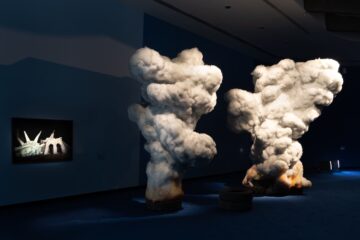

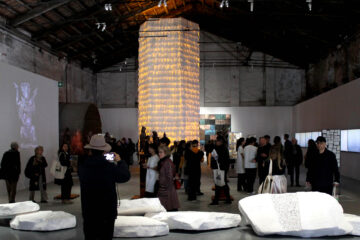
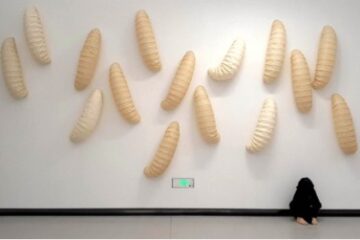
No Comment